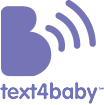Resources for New Moms
- Baby’s Development
- Tips & Resources
- Feeding Baby
- Health & Safety
- Well-Child Visits & Vaccines
- Well-Child Visit Guides
- Vaccines
- Finding Free Vaccines
- Making Shots Less Stressful
- Protect Baby from Pertussis (Whooping Cough)
- Vaccine Information for Babies
- Vaccines: DTaP
- Vaccines: MMRV
- Vaccines: Hepatitis A
- Vaccines: Hepatitis B
- Vaccines: Hib
- Vaccines: Rotavirus
- Vaccines: PCV
- Vaccines: Polio (IPV)
- Vaccines: Seasonal Flu
- Vaccines: Varicella
- Parenting
9-Month-Old Milestones
Q:
My baby is already pulling up and standing on her own. Is that what she should be doing at this age?
Yes
Correct!
Yes, 9-month-olds can pull to stand and stand with support (like holding onto a couch). Talk to your doctor if your baby cannot put any weight on her legs when she is supported.
No
Incorrect!
9-month-olds can pull to stand and stand with support (like holding onto a couch). Talk to your doctor if your baby cannot put any weight on her legs when she is supported.
Milestones for your 9-month-old baby
Babies develop in their own way, so it’s impossible to know when your baby will achieve each milestone. The developmental milestones listed here give you an idea of what you can expect. Check the milestones your child has achieved by the end of 9 months. Talk with your child’s provider at every well–child visit about the milestones your child can do and what to expect next.
What most babies do at 9 months
Playing with others:
- May be afraid of strangers.
- May be clingy with familiar adults.
- Has favorite toys.
Talking:
- Understands “no.“
- Makes a lot of different sounds like “mamamama” and “bababababa.“
- Copies sounds and gestures of others.
- Uses fingers to point at things.
Learning and thinking:
- Watches the path of something as it falls.
- Looks for things you hide.
- Plays peek-a-boo.
- Puts things in their mouth.
- Moves things smoothly from one hand to the other.
- Picks up small objects like cereal between thumb and index finger.
Baby’s moving body:
- Stands, holding on.
- Can get into sitting position.
- Sits without support.
- Pulls to stand.
- Crawls.
Talk to your child’s doctor if your child:
- Doesn’t bear weight on legs with support.
- Doesn’t sit with help.
- Doesn’t babble (“mama”, “baba”, “dada”).
- Doesn’t play any games involving back-and-forth play.
- Doesn’t respond to own name.
- Doesn’t seem to recognize familiar people.
- Doesn’t look where you point.
- Doesn’t transfer toys from one hand to the other.

